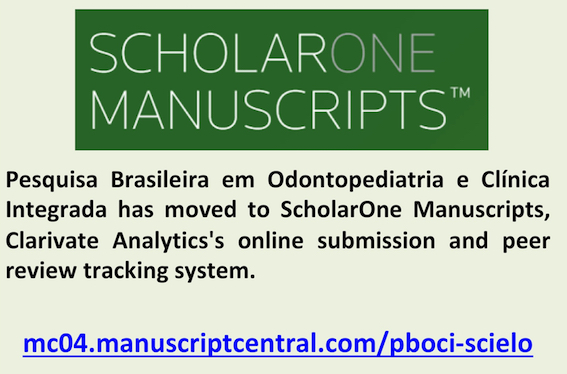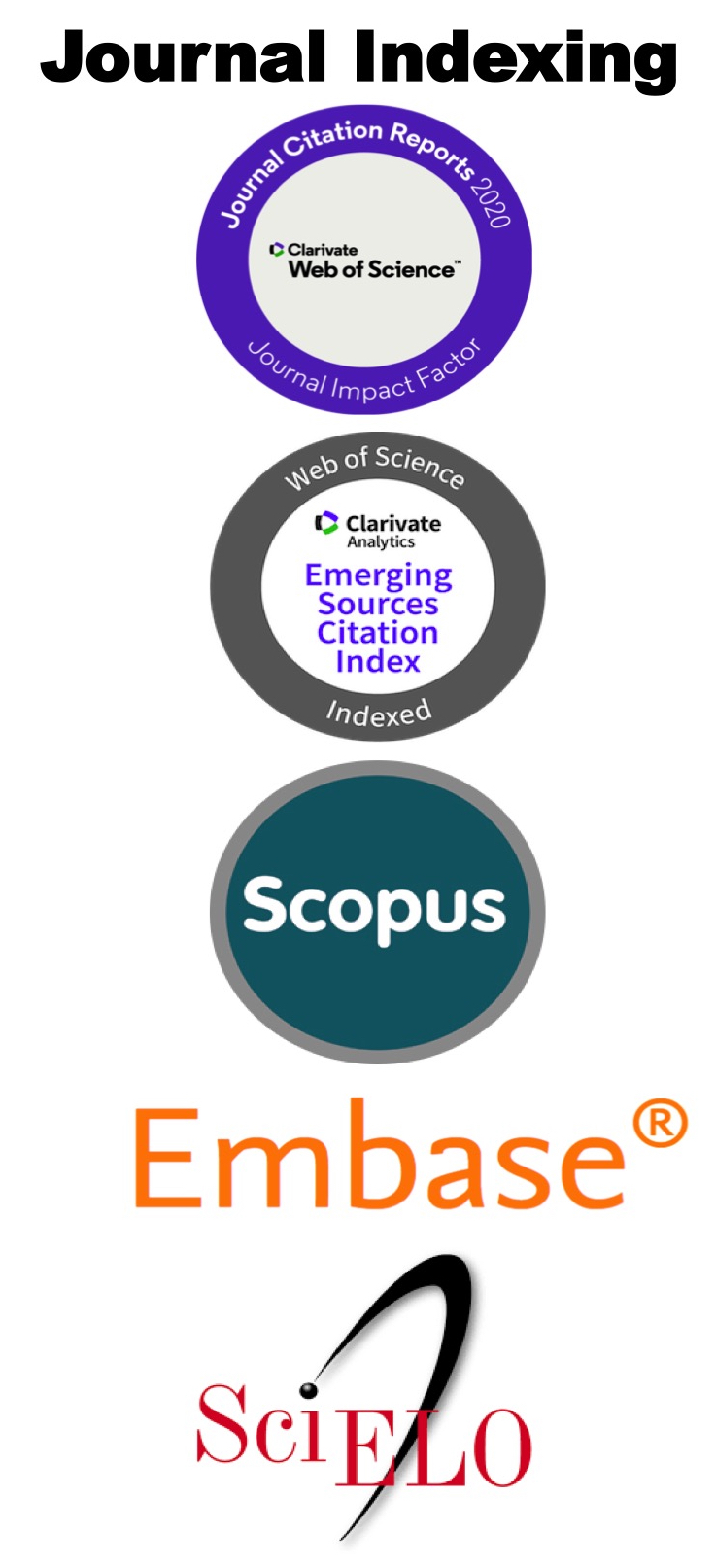Assessing the Quality of YouTube® Videos on Nitrous Oxide/Oxygen Inhalation: A Multi-Dimensional Approach for Pediatric Dentists
Keywords:
Practice Guidelines as Topic, Education, Dental, Nitrous Oxide, Oxygen Inhalation TherapyAbstract
Objective: To evaluate the content, credibility, quality, and alignment with American Academy of Pediatric Dentistry (AAPD) guidelines of YouTube® videos on Nitrous Oxide/Oxygen (N2O/O2) Inhalation for pediatric dentists. Material and Methods: Two hundred YouTube® videos on N2O/O2 inhalation were assessed using an AAPD-aligned checklist for content, Journal of the American Medical Association (JAMA) benchmarks for credibility, and Video Information and Quality Index (VIQI) elements for quality. A total score combining these three tools determined each video's overall quality. Analysis used Kruskal-Wallis tests and Spearman's correlation, while reliability was assessed using Cohen's kappa. Results: Of the initial 200 videos, 82 were thoroughly analyzed, with only 15.9% contributed by pediatric dentists. Mean scores were: JAMA 0.62/4 (SD=0.87), VIQI 4.68/10 (SD=2.10), content 8.01/33 (SD=7.50), and total 26.39/100 (SD=20.44). Most videos failed JAMA credibility criteria (63.4-96.3% absence rates). For VIQI, 75.6% rated poor for visual clarity. Significant positive correlations existed between video duration, interaction index, and total score (p<0.05). Most videos demonstrated limited coverage of crucial aspects, such as contraindications, pre-operative instructions, behavior management, delivery systems, monitoring, staff safety, occupational risks, and legal documentation. Conclusion: Existing YouTube® content on N2O/O2 inhalation falls short of AAPD guidelines and quality standards (including content, credibility, and technical aspects), underscoring the need for pediatric dentists to validate information with reliable sources. There is an immediate call for high-quality, guideline-adherent content.References
Ashley P, Anand P, Andersson K. Best clinical practice guidance for conscious sedation of children undergoing dental treatment: An EAPD policy document. Eur Arch Paediatr Dent 2021; 22(6):989-1002. https://doi.org/10.1007/s40368-021-00660-z
American Academy of Pediatric Dentistry. Use of nitrous oxide for pediatric dental patients. In: The Reference Manual of Pediatric Dentistry. Chicago, IL: American Academy of Pediatric Dentistry; 2023:393-400.
Coté CJ, Wilson S. American Academy of Pediatric Dentistry, American Academy of Pediatrics. Guidelines for monitoring and management of pediatric patients before, during, and after sedation for diagnostic and therapeutic procedures. Pediatr Dent 2019; 41(4): E26-E52.
Juntgen LM, Sanders BJ, Walker LA, Jones JE, Weddell JA, Tomlin AM, et al. Factors influencing behavior guidance: A survey of practicing pediatric dentists. Pediatr Dent 2013; 35(7):539-545.
Houpt M. Project USAP 2000--Use of sedative agents by pediatric dentists: A 15-year follow-up survey. Pediatr Dent 2002; 24(4):289-294.
Woolley SM, Hingston EJ, Shah J, Chadwick BL. Paediatric conscious sedation: Views and experience of specialists in paediatric dentistry. Br Dent J 2009; 207(6): E11; discussion 280-281. https://doi.org/10.1038/sj.bdj.2009.664
Wilson S, Alcaino EA. Survey on sedation in paediatric dentistry: A global perspective. Int J Paediatr Dent 2011; 21(5):321-332. https://doi.org/10.1111/j.1365-263X.2011. 01127.x
Khinda V, Rao D, Sodhi SPS. Nitrous oxide inhalation sedation rapid analgesia in dentistry: An overview of technique, objectives, indications, advantages, monitoring, and safety profile. Int J Clin Pediatr Dent 2023; 16(1):131-138. https://doi.org/10.5005/jp-journals-10005-1807
Alkandari SA, Almousa F, Abdulwahab M, Boynes SG. Dentists' and parents' attitude toward nitrous oxide use in Kuwait. Anesth Prog 2016; 63(1):8-16. https://doi.org/10.2344/14-00008.1
Daher A, Hanna RP, Costa LR, Leles CR. Practices and opinions on nitrous oxide/oxygen sedation from dentists licensed to perform relative analgesia in Brazil. BMC Oral Health 2012; 12:21. https://doi.org/10.1186/1472-6831-12-21
Fu MW, Kalaichelvan A, Liebman LS, Burns LE. Exploring predoctoral dental student use of YouTube as a learning tool for clinical endodontic procedures. J Dent Educ 2022; 86(6):726-735. https://doi.org/10.1002/jdd.12853
Burns LE, Abbassi E, Qian X, Mecham A, Simeteys P, Mays KA. YouTube use among dental students for learning clinical procedures: A multi-institutional study. J Dent Educ 2020; 84(10):1151-1158. https://doi.org/10.1002/jdd.12240
Kiraz G, Mumcu AK, Kurnaz S. YouTube as a source of information about rubber dam: Quality and content analysis. Restor Dent Endod 2024; 49(1):e10. https://doi.org/10.5395/rde.2024.49.e10
Azak M, Şahin K, Korkmaz N, Yıldız S. YouTube as a source of information about COVID-19 for children: Content quality, reliability, and audience participation analysis. J Pediatr Nurs 2022; 62:e32-e38. https://doi.org/10.1016/j.pedn.2021.06.024
Amošiūnaitė I, Vasiliauskas A, Dindaroğlu F. Does YouTube provide adequate information about orthodontic pain? Angle Orthod 2023; 93(4):403-408. https://doi.org/10.2319/072822-527.1
Çapan BŞ. YouTube as a source of information on space maintainers for parents and patients. PLoS One 2021; 16(2):e0246431. https://doi.org/10.1371/journal.pone.0246431
Silberg WM, Lundberg GD, Musacchio RA. Assessing, controlling, and assuring the quality of medical information on the Internet: Caveat lector et viewer--let the reader and viewer beware. JAMA 1997; 277(15):1244-1245.
Uzel İ, Ghabchi B, Akalın A, Eden E. YouTube as an information source in paediatric dentistry education: Reliability and quality analysis. PLoS One 2023; 18(3):e0283300. https://doi.org/10.1371/journal.pone.0283300
Maganur PC, Hakami Z, Raghunath RG, Vundavalli S, Jeevanandan G, Almugla YM, et al. Reliability of educational content videos in YouTube™ about stainless steel crowns. Children 2022; 9(4):571. https://doi.org/10.3390/children9040571
Cuglan S, Gas S. Are YouTube videos about skull bone anatomy useful for students? Clin Anat 2024; 37(3):344-352. https://doi.org/10.1002/ca.24138
Abukaraky A, Hamdan AA, Ameera MN, Nasief M, Hassona Y. Quality of YouTubeTM videos on dental implants. Med Oral Patol Oral Cir Bucal 2018; 23(4):e463-468. https://doi.org/10.4317/medoral.22447
Kodonas K, Fardi A. YouTube as a source of information about pulpotomy and pulp capping: A cross-sectional reliability analysis. Restor Dent Endod 2021; 46(3):e40. https://doi.org/10.5395/rde.2021.46.e40
ElKarmi R, Hassona Y, Taimeh D, Scully C. YouTube as a source for parents' education on early childhood caries. Int J Paediatr Dent 2017; 27(6):437-443. https://doi.org/10.1111/ipd.12277
Hassona Y, Taimeh D, Marahleh A, Scully C. YouTube as a source of information on mouth (oral) cancer. Oral Dis 2016; 22(3):202-208. https://doi.org/10.1111/odi.12434
Duman C. YouTube™ quality as a source for parent education about the oral hygiene of children. Int J Dent Hyg 2020; 18(3):261-267. https://doi.org/10.1111/idh.12445
Jamleh A, Aljohani SM, Alzamil FF, Aljuhayyim SM, Alsubaei MN, Alali SR, et al. Assessment of the educational value of endodontic access cavity preparation YouTube video as a learning resource for students. PLoS One 2022; 17(8):e0272765. https://doi.org/10.1371/journal.pone.0272765
Dias da Silva MA, Pereira AC, Walmsley AD. The availability of open-access videos offered by dental schools. Eur J Dent Educ 2019; 23(4):522-526. https://doi.org/10.1111/eje.12461
Tozar KN, Yapıcı Yavuz G. Reliability of information on YouTube™ regarding pediatric dental trauma. Dent Traumatol 2021; 37(6):772-778. https://doi.org/10.1111/edt.12708
Varghese NS, Cherian JM, Thomas AM. Credibility of YouTube™ videos on root canal treatment in children. J Indian Soc Pedod Prev Dent 2022; 40(2):154-158. https://doi.org/10.4103/jisppd.jisppd_171_22
Wong NSM, Yeung AWK, McGrath CP, Leung YY. Qualitative evaluation of YouTube videos on dental fear, anxiety and phobia. Int J Environ Res Public Health 2022; 20(1):750. https://doi.org/10.3390/ijerph20010750
Azer SA, Bokhari RA, AlSaleh GS, Alabdulaaly MM, Ateeq KI, Guerrero APS, et al. Experience of parents of children with autism on YouTube: Are there educationally useful videos? Inform Health Soc Care 2018; 43(3):219-233. https://doi.org/10.1080/17538157.2018.1431238
Downloads
Published
How to Cite
Issue
Section
License
Copyright (c) 2024 Pesquisa Brasileira em Odontopediatria e Clínica Integrada

This work is licensed under a Creative Commons Attribution-NonCommercial 4.0 International License.



